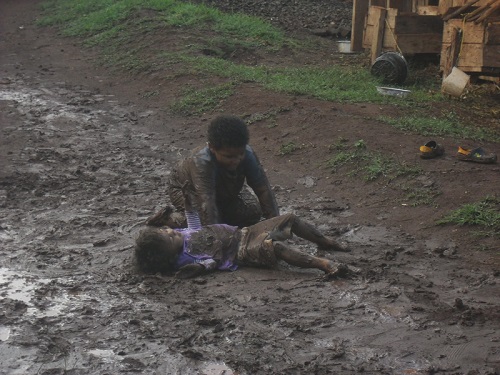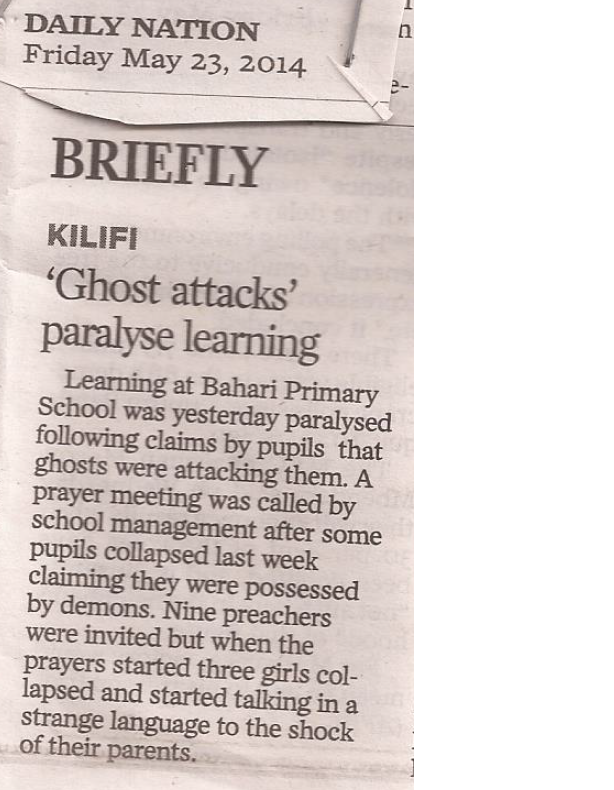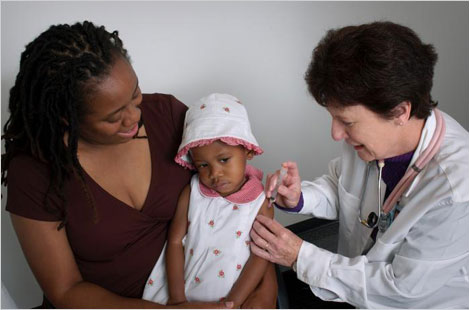
‘Cold’ weather and pneumonia
When my son was a year and a half, he was diagnosed with pneumonia and admitted for a week in hospital.
I do not take pneumonia lightly – but there are some serious misconceptions about pneumonia that are propagated too much in Kenya = that cold air brings pneumonia.
I have been scolded for standing with my baby under a fan in Mombasa ….
‘Wewe unafanya kazi KEMRI na hujui mtoto atapata pneumonia sababu ya hio baridi ya fan?’
You work in KEMRI and you don’t even know that a child can catch pneumonia from the cold coming from that fan?
When I took my children for vaccinations, I would dress them in a woolly hat and socks and carry a sheet to cover them (in Mombasa!) – just to avoid being scolded by the nurses for exposing my child to cold. Once the child was vaccinated, I would get into the car and remove all those layers and store them carefully for my next trip. Can I remind anyone who does not know that the ‘normal’ Mombasa daytime temperatures is at least 30 degrees.
I don’t think there are any of us whose mothers have not shouted……
‘Get out of the rain or you will catch pneumonia!’
I allow my children to play in the cold and rain till they have had enough…..I took this photo of them at my mother’s house about 4 years ago…….
This was in August, towards the end of our winter in Kenya – the temperatures in the lower 20’s. Do you look at that and think …..
‘…….get those poor kids out of the wet and cold!’
BUT
Is there absolutely no association between the cold weather and pneumonia?
In the Northern hemisphere, there is a clear seasonal trend with pneumonia cases being highest in the winter. But winter can be bitterly cold and just the dip in temperatures is enough to send a few elderly people home to meet their maker every year. There is no first timer from the tropics who can forget what hit them, when their faces came in touch with that cold winter wind – it put everything else labelled ‘cold’ into perspective.
It’s not hard to picture this cold leading to an increase in pneumonia – BUT – what about the tropics, our ‘winter’ temperatures can also vary – in Kilifi, the coldest night in our June ‘winter’ will be 19 degrees (and then we get all our coats out). In the Kenyan highlands however, temperatures can dip to single digits in June-July nights……. and we even get snow – and it’s not at the tip of Mt Kenya where it belongs……..
http://www.nation.co.ke/News/-/1056/466820/-/tkb4rf/-/index.html
Some researchers were keen to find out whether this dip in temperatures may lead to an increase in pneumonia cases.
In 2005, scientists from the African Population and Health Research Center (APHRC) conducted a study in the Nairobi slums of Korogocho and Viwandani looking at how the patterns of mortality from pneumonia varied over that year. Their work was published in the American Journal of Tropical Medicine in 2009. This study showed that the highest number of deaths due to pneumonia occurred during the ‘cold’ season of May through to August with the highest number of deaths in June. However, deaths due to other infectious conditions were also highest at this time. The study had issues of course, the use of verbal autopsies. These is where careers/parents are asked questions on the signs and symptoms preceding death – the answers are forwarded to clinicians who then try and classify the cause of death. Since there are often no hospital or lab data, classifying deaths using verbal autopsy has its issues. However, this is the data we have and so what can we say using it……
Can we now say that the ‘cold’ brought with it pneumonia?
What is it about cold weather that seems to link it so much to pneumonia?
Part of the explanation is simple – and it’s not about temperature itself directly linked to pneumonia. The main thing is that the cold keeps us indoors. We close all the windows, we huddle together in front of a fire – we are in congested spaces with no ventilation. The bacteria or viruses that spread the disease – now have a chance to spread from the careers to the susceptible.
Studies in the west have shown that elderly people tend to be admitted for pneumonia during the winter – BUT more specifically, after the Christmas holidays. Scientists were able to show that it was because over Christmas, the elderly had been visited by their grandchildren – and children harbour a lot of those pneumonia causing bugs in them – and they pass those on to their grandparents during that close time together over Christmas.
So when it’s cold, we do the same, we gather together – exchange hugs as well as bacteria and viruses and those with less immunity – mainly children – succumb to the bugs we pass on to them in the warmth of our company.
Another factor is that of pollution.
In the cold season, it’s common to light jiko’s (charcoal burners) in the house. Those who cook with kerosene will likely do it more in the ‘windows are completely shut’ houses – the pollution of burning fuels irritates the respiratory tracts of the young and gives the bacteria and viruses floating about in out unventilated spaces, a gateway into their bodies.
Remember though that scientists still do not know the cause of 25% of all pneumonias – so these are not complete answers – just a part of what is known .
The ‘cold season’ has come early in Kenya, courtesy of the El-nino rains – we are cuddling together next to our warm fires …… there will be a lot more pneumonia during this period than is usual for this time and it’s not because of the cold, but our bringing our bugs so close to our children.
So keep the air moving, don’t close all those windows and don’t use the charcoal jiko’s in unventilated spaces. It’s not just the carbon monoxide poisoning – which may kill you before the pneumonia – but that it’s not really great for your child’s lungs.
Bring out the blankets and socks instead and open a window or two.
Comments
Comments are closed.






Mary
Very informative piece.
#The photo of Matt and his little siz reminds me of the Omo/powder soap adverts……Dirt is good 🙂